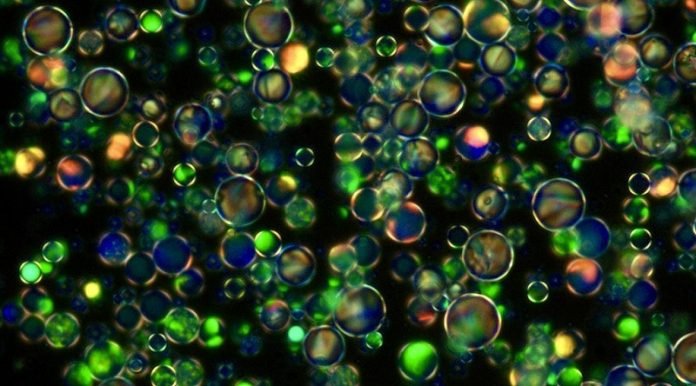
Liquid crystals have enabled new technologies, like LCD screens, through their ability to reflect certain color wavelengths.
Researchers at the Pritzker School of Molecular Engineering at the University of Chicago and Argonne National Laboratory have developed an innovative way to sculpt a liquid “crystal within a crystal.”
These new crystals could be used for next-generation display technologies or sensors that consume very little energy.
Because such crystals-within-crystals can reflect light at certain wavelengths that others can’t, they could be used for better display technologies.
They also can be manipulated with temperature, voltage or added chemicals, which would make them valuable for sensing applications.
Changes in temperature, for example, would result in color changes. And because such changes would require only slight temperature variations or small voltages, the devices would consume very little energy.
Integral to technology
Liquid crystals’ molecular orientation makes them useful for key aspects of many display technologies.
They also can form “blue phase crystals,” in which molecules are organized in highly regular patterns that reflect visible light.
Blue phase crystals have the properties of both liquids and crystals, meaning they are able to flow and are pliable, while exhibiting highly regular features that transmit or reflect visible light.
They also have better optical properties and a faster response time than traditional liquid crystals, making them a good candidate for optical technologies.
Additionally, the features responsible for reflecting light in blue phase crystals are separated by relatively large distances compared to traditional crystals such as quartz.
The larger feature sizes makes it easier to engineer the interfaces between them, a notoriously difficult process in traditional crystalline materials.
Such interfaces are important because they provide ideal sites for chemical reactions and mechanical transformations, and because they can hinder transport of sound, energy, or light.
Creating an interface between crystals
To engineer a blue phase crystal interface, the scientists developed technology that relies on chemically patterning surfaces on which liquid crystals are deposited, thereby providing a means to manipulate their molecular orientation.
That orientation is then amplified by the liquid crystal itself, allowing for a particular blue phase crystal to be sculpted within another blue phase crystal.
The process, a result of theoretical predictions and experimentation to arrive at the right design, allowed them to create specific tailored crystal shapes within the liquid crystals—a new breakthrough.
Not only that, the newly sculpted crystal could be manipulated with both temperature and current to change from one blue phase into another type of blue phase, thereby changing color.
“That means the material can change its optical characteristics very precisely,” said paper co-author Juan de Pablo, the Liew Family Professor of Molecular Engineering, senior scientist at Argonne National Laboratory, and a leading polymer materials scientist.
“We now have a material that can respond to external stimuli and reflect light at particular wavelengths for which we didn’t have good alternatives before.”
Useful for display technologies, sensors
This ability to manipulate the crystals at such a small scale also allows researchers to use the them as templates for fabricating perfectly uniform structures at the nanoscale, said co-author Paul Nealey, the Brady W. Dougan Professor of Molecular Engineering and one of the world’s leading experts on patterning organic materials.
“We are already experimenting with growing other materials and experimenting with optical devices,” Nealey said.
“We’re looking forward to using this method to create even more complex systems.”
Written by Emily Ayshford.



